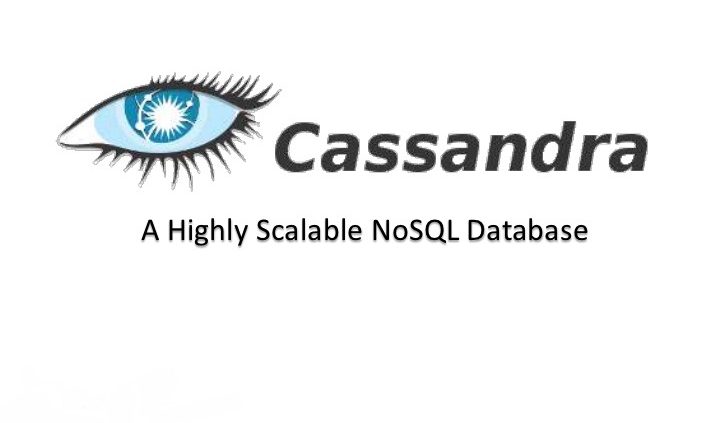Apache Cassandra
Cassandra is open source development at Apache. The Apache Cassandra project fetches together Dynamo’s fully spread design and big tables Column family supported data model.
Cassandra is adjusting to new advances in distributed algorithms like Accural style failure finding and others. Cassandra is verified as it is in utilize by Digg, Twitter, Facebook, Rackspace, Reddit, Cisco, and Cloudkick. The biggest production cluster has over 100 TB of data in more 150 machines. It is Fault liberal, decentralizes and provides the control to web developers to select between synchronous and asynchronous data replication. It suggests rich data model, to well compute using key and value pairs. It is extremely scalable both in terms of storage volume and applies for throughput while not being focused to any single point of collapse. It is strong and supports third party applications. Cassandra intends to run on a peak of an infrastructure of hundreds of nodes.
At this level, small and large components stop working continuously. The way Cassandra runs the constant state in the face of this failure drives the consistency and scalability of the software systems relying on this repair. Cassandra looks like a database and shares many design and performance strategies therewith, Cassandra does not maintain a full relational data modeling its place it presents customers with a simple data model that supports active control over data format and layout. Cassandra system was intended to run on cheap product hardware and feel high write throughput while not give up read efficiency.
What is Apache Cassandra?:
Apache Cassandra is a high-performance and highly scalable dispersed database management system that can provide as both an operational data storage for online, and as a read thorough database for business intelligence systems. Cassandra is capable of managing the sharing of data across several data centers and provides incremental scalability with any points of failure. It is a controlled storage system over a P2P network. Cassandra utilizes a synthesis of familiar techniques to complete scalability and availability. Cassandra is a distributed storage system for running structured data that is calculated to scale to huge sizes crosswise many commodity servers, with any point of failure.
The idea is to keep running on top of an infrastructure of several hubs, where little and expansive parts in the server farms fail consistently. Apache Cassandra accomplishes adaptability, superior, high accessibility and applicability. It doesn’t support a full relational data model. Rather it gives customers a simple data model as clarified later.
Many recent businesses have outgrown the classic RDBMS utilize case and need of data management software that suggests more. Successful web companies like Google, Yahoo, Facebook, and others like them, first showing the require for a more forward-thinking technique beyond sharding that handled all types of data.
Comparing the Cassandra Data Model to a Relational Database:
The Apache Cassandra data model is planned for distributed data on a very large scale. Although it is natural to want to evaluate the relational database to a Cassandra data model, they are relatively different. In a relational database, data is stored in tables and the tables including an application are normally related to each other. Data regularly control to decrease redundant entries, and tables are connected to common keys to suit a given query.
In Apache Cassandra, the keyspace is keeping for your application data, similar to a database in a relational database. Inside the keyspace are two more column family objects, which are related to tables. Column families enclose columns, and a set of related columns is known by an application-supplied row key. Each row in a column family is not essential to have the same set of columns. Cassandra does not impose relationships between column families the method that relational databases do between tables. There are no proper foreign keys in Cassandra, and connecting column families at query time is not supported. Each column family has an independent set of columns that are proposed to be accessed together to assure specific queries from your application.
Cassandra Architecture:
Cassandra can fulfill numerous data-driven application utilize cases through a carefully thought-out architecture designed. It deals with all types of modern information, scale to meet the necessities of “huge data” administration. It offers straight execution scale-out capacities and conveys the sort of high accessibility that practically every on the web, 24×7 application needs. Cassandra is a shared appropriated data administration framework where each node is basically the same as for how it works in the group. In Cassandra, there is no understanding of an “ace node” or anything comparative, with the advantage being inferred that no single purpose of disappointment exists for any key procedure or capacity.
The scale-out part of Apache Cassandra permits node additions to happen with no interruption to application uptime. Ability to handle expanding I/O activity or approaching information volumes is included effectively. It requires no unique ETL forms or other information development work to be performed physically. Rather, Cassandra consequently segments information crosswise over nodes once at least one node. They have been added to a group and the new nodes from existing machines in the bunch. Data redundancy to ensure against equipment disappointment and other information misfortune situations. It is likewise incorporated with and oversaw straightforwardly by Cassandra. Advance, this ability can be arranged to be very modern. So information can be appropriated over numerous, geologically scattered server farms.






Leave a Reply
Want to join the discussion?Feel free to contribute!